LM3S9B96設(shè)計(jì)的32位Cortex-M3 MCU開發(fā)設(shè)計(jì)
本文介紹了LM3S9B96 MCU Cortex-M3處理器方框圖以及Stellaris? LM3S9B96開發(fā)板主要特性,方框圖,電路圖和擴(kuò)展板電路圖.
LM3S9B96是TI 公司的基于ARM Cortex-M3 的32位MCU,具有先前8位和16位MCU的價格成本, CPU工作頻率80MHz,100DMIPS性能, ARM Cortex SysTick定時器,片內(nèi)具有高達(dá)50MHz的256KB單周期閃存和96KB單周期SRAM,內(nèi)部的ROM加載了StellarisWare軟件, 具有擴(kuò)展的外設(shè)接口和串行接口,目標(biāo)應(yīng)用在遙控監(jiān)視,POS銷售機(jī),測試測量設(shè)備,網(wǎng)絡(luò)設(shè)備和交換,工廠自動化,HVAC和建筑物控制,游戲設(shè)備,運(yùn)動控制,醫(yī)療設(shè)備,電源和交通運(yùn)輸,防火和安全等.
LM3S9B96目標(biāo)應(yīng)用:
The Stellaris family is positioned for cost-conscious applications requiring significant control processing and connectivity capabilities such as:
■ Remote monitoring
■ Electronic point-of-sale (POS) machines
■ Test and measurement equipment
■ Network appliances and switches
■ Factory automation
■ HVAC and building control
■ Gaming equipment
■ Motion control
■ Medical instrumentation
■ Fire and security
■ Power and energy
■ Transportation
圖1.Stellaris LM3S9B96方框圖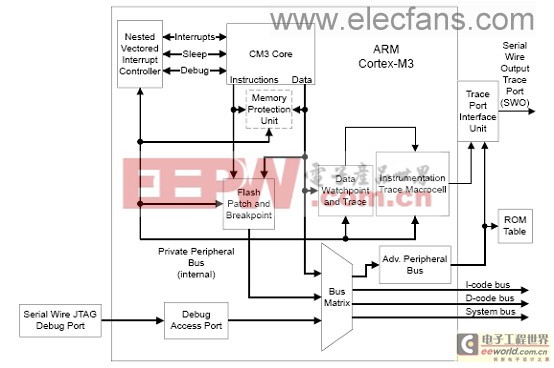
圖2.Stellaris LM3S9B96 Cortex-M3處理器方框圖
Stellaris? LM3S9B96開發(fā)板
The Stellaris? LM3S9B96 Development Board provides a platform for developing systems around the advanced capabilities of the LM3S9B96 ARM? Cortex?-M3-based microcontroller.
The LM3S9B96 is a member of the Stellaris Tempest-class microcontroller family. Tempest-class devices include capabilities such as 80 MHz clock speeds, an External Peripheral Interface (EPI) and Audio I2S interfaces. In addition to new hardware to support these features, the DK-LM3S9B96 board includes a rich set of peripherals found on other Stellaris boards.
The development board includes an on-board in-circuit debug interface (ICDI) that supports both JTAG and SWD debugging. A standard ARM 20-pin debug header supports an array of debugging solutions.
The Stellaris? LM3S9B96 Development Kit accelerates development of Tempest-class microcontrollers. The kit also includes extensive example applications and complete source code.
LM3S9B96開發(fā)板主要特性:
The Stellaris? LM3S9B96 Development Board includes the following features.
Simple set-up—USB cable provides debugging, communication, and power
Flexible development platform with a wide range of peripherals
Color LCD graphics display
– TFT LCD module with 320 x 240 resolution
– Resistive touch interface
80 MHz LM3S9B96 microcontroller with 256 K Flash, 96 K SRAM, and integrated Ethernet MAC+PHY, USB OTG, and CAN communications
– – 8 MB SDRAM (plug-in EPI option board)
– – EPI break-out board (plug-in option board)
1 MB serial Flash memory
Precision 3.00 V voltage reference
SAFERTOS? operating system in microcontroller ROM
I2S stereo audio codec
– Line In/Out
– Headphone Out
– Microphone In
Controller Area Network (CAN) Interface
10/100 BaseT Ethernet
USB On-The-Go (OTG) Connector
– Device, Host, and OTG modes
User LED and push button
Thumbwheel potentiometer (can be used for menu navigation)
MicroSD card slot
Supports a range of debugging options
– Integrated In-circuit Debug Interface (ICDI)
– JTAG, SWD, and SWO all supported
– Standard ARM? 20-pin JTAG debug connector
USB Virtual COM Port
Jumper shunts to conveniently reallocate I/O resources
Develop using tools supporting Keil? RealView? Microcontroller Development Kit (MDK-ARM), IAR Embedded Workbench, Code Sourcery GCC development tools, Code Red Technologies development tools, or Texas Instruments’ Code Composer Studio? IDE
Supported by StellarisWare? software including the graphics library, the USB library, and the peripheral driver library
An optional Flash and SRAM memory expansion board (DK-LM3S9B96-EXP-FS8) is also available for use with the DK-LM3S9B96 development board
– Works with the External Peripheral Interface (EPI) of the Stellaris microcontroller
– Provides Flash memory, SRAM, and an improved performance LCD interface
LM3S9B96開發(fā)板包括:
The Stellaris? LM3S9B96 Development Kit contains everything needed to develop and run a range of applications using Stellaris microcontrollers:
LM3S9B96 development board
8 MB SDRAM expansion board
EPI signal breakout board
Retractable Ethernet cable
USB Mini-B cable for debugger use
USB Micro-B cable for OTG-to-PC connection
USB Micro-A to USB A adapter for USB Host
USB Flash memory stick
microSD Card
20-position ribbon cable
CD containing:
– A supported version of one of the following (including a toolchain-specific Quickstart
guide):
? Keil? RealView? Microcontroller Development Kit (MDK-ARM)
? IAR Embedded Workbench
? Code Sourcery GCC development tools
? Code Red Technologies development tools
? Texas Instruments’ Code Composer Studio? IDE
– Complete documentation
– Quickstart application source code
– Stellaris? Firmware Development Package with example source code
圖3.LM3S9B96開發(fā)板外形圖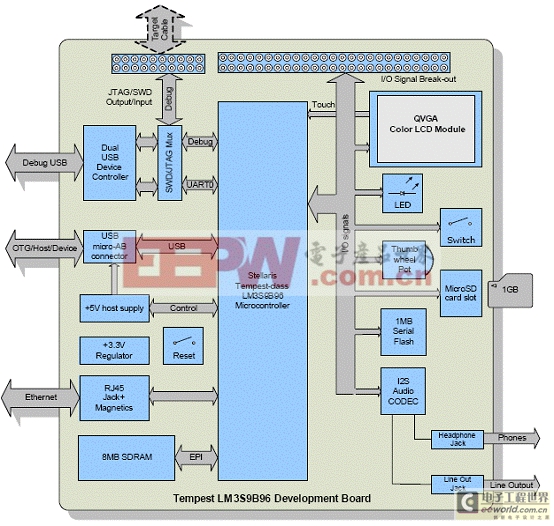
圖4.DK-LM3S9B96開發(fā)板方框圖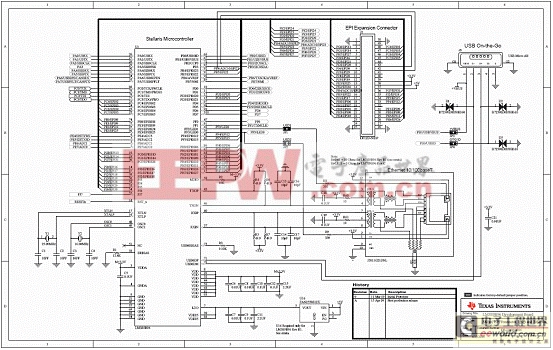
圖5.DK-LM3S9B96開發(fā)板電路圖(1)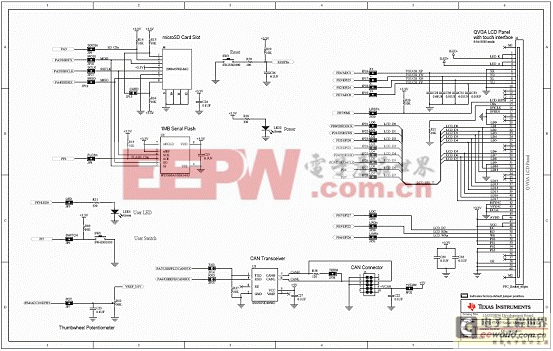
圖6.DK-LM3S9B96開發(fā)板電路圖(2)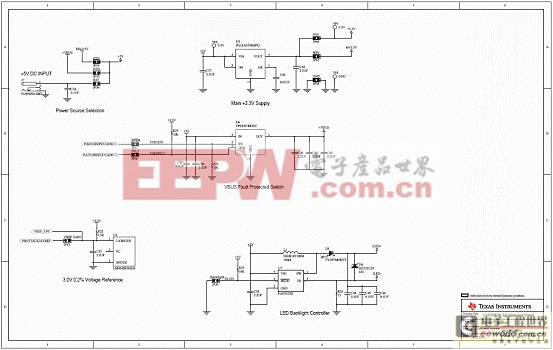
圖7.DK-LM3S9B96開發(fā)板電路圖(3)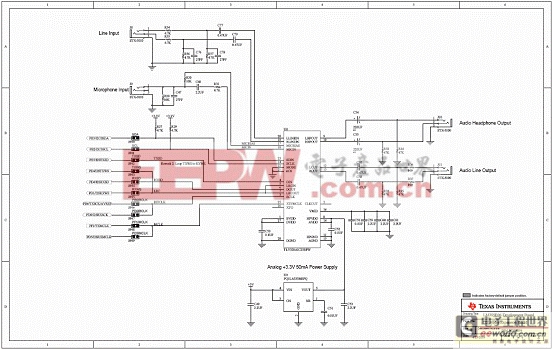
圖8.DK-LM3S9B96開發(fā)板電路圖(4)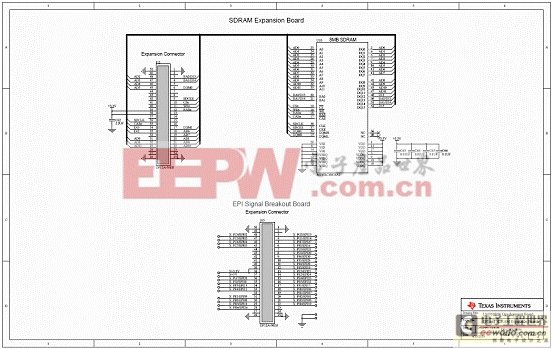
圖9.DK-LM3S9B96開發(fā)板電路圖(5)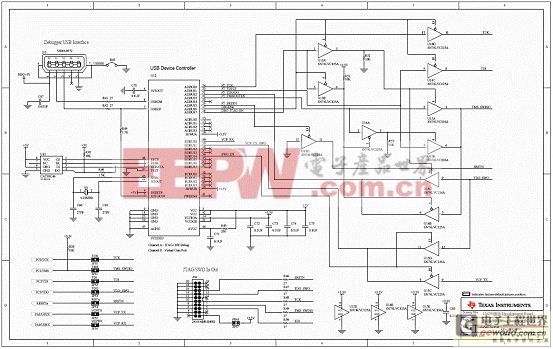
圖10.DK-LM3S9B96開發(fā)板電路圖(6)
圖11.用于DK-LM3S9B96的FLASH/SRAM/LCD IF擴(kuò)展板電路圖(1)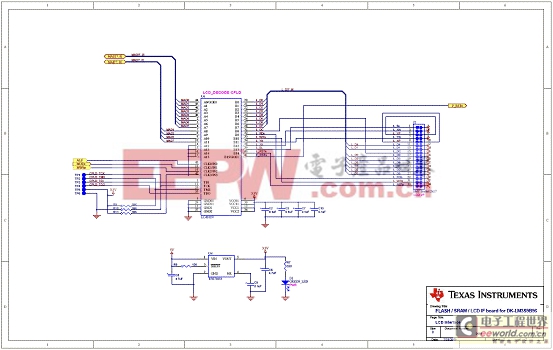
圖12.用于DK-LM3S9B96的FLASH/SRAM/LCD IF擴(kuò)展板電路圖(2)



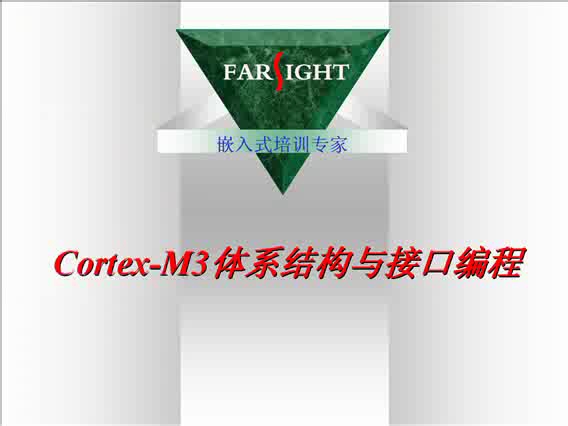
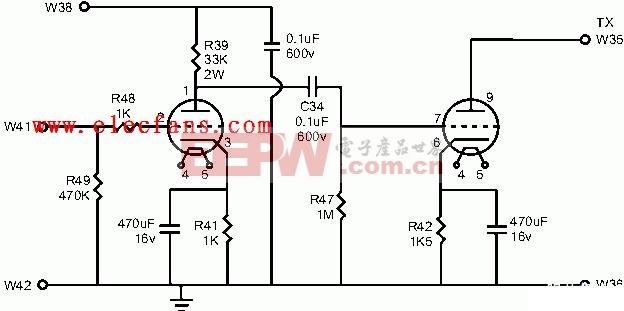

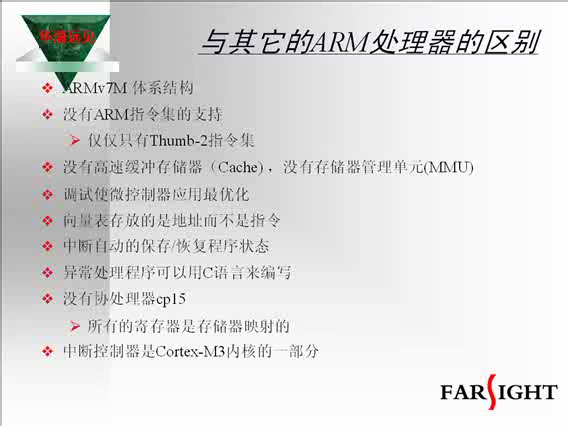
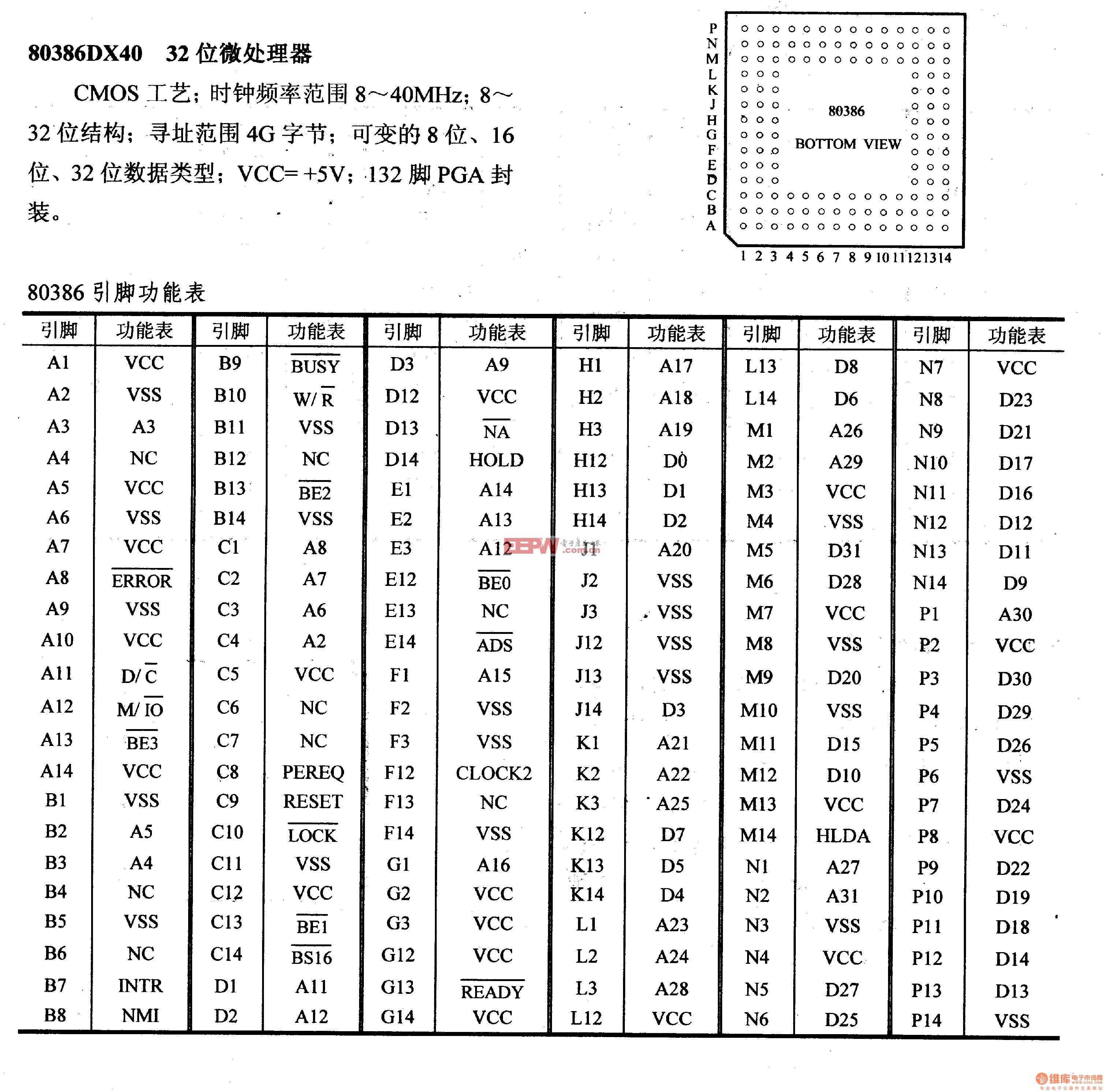

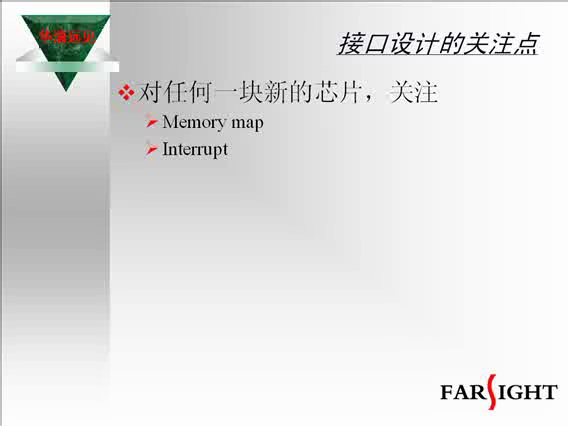
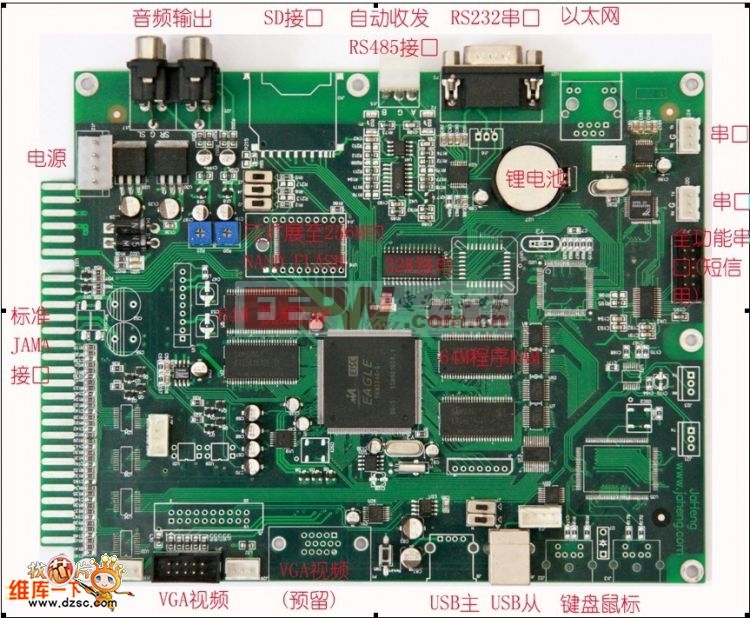
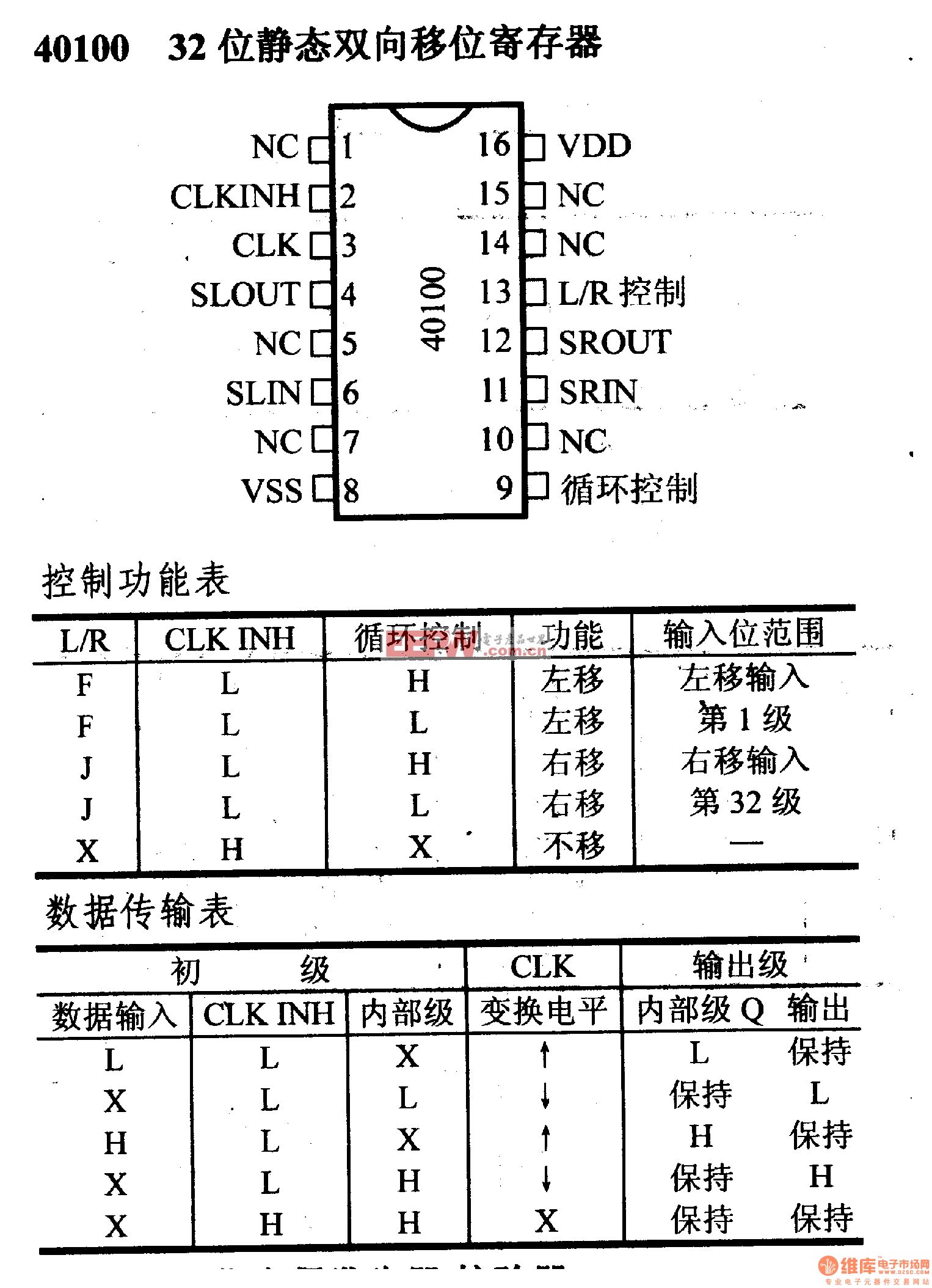
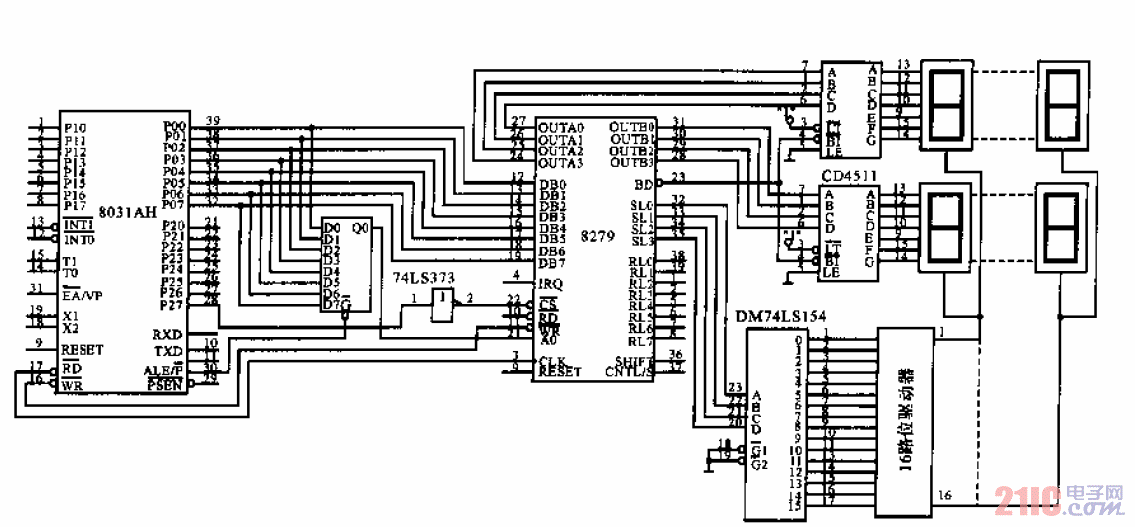
評論